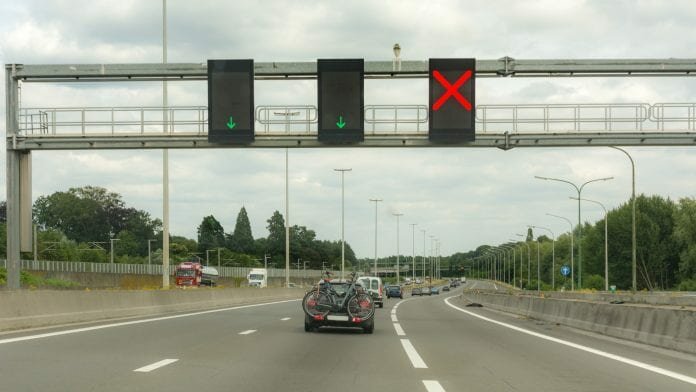
The UK’s Automobile Association (AA) has revealed the existence of a Highways England report highlighting flaws in smart highway safety.
The AA, the UK’s largest motoring organisation, discovered the 2016 ‘Stationary Vehicle Detection System (SVD) Monitoring Final Report’ through a Freedom of Information request. The report analysed vehicle breakdown data from sections of the M25 motorway where the hard shoulder had been converted into a live lane, known as ‘All Lanes Running’ (ALR) motorways; and found substantial decreases in smart highway safety on sections of the road without a hard shoulder.
Stationary Vehicle Detection road safety technology, which uses radar to identify and issue alerts for stationary vehicles on the road in real time, is only in effect on 24.2 miles (38.95km) of the 135.1 miles (217.42km) of England’s ALR roads. Where SVD is in effect, it is capable of closing a lane with a stationary vehicle in three minutes – however, on the 82% of ALR motorways without SVD capability, the report found that the average response time was just over 17 minutes. Stopping a vehicle in a live lane of a motorway with all lanes running was found to be more than three times as dangerous to the driver than stopping on the hard shoulder of a conventional motorway.
AA president Edmund King said: “This highlights why growing numbers of the public are justified in their safety concerns over the removal of the hard shoulder. Ultimately, until you are found by the camera you are a sitting duck. Taking three minutes to set the red ‘X’ [which indicates a lane is closed] is too long for someone in a broken down vehicle to wait. Expecting someone to wait in a dangerous and life threatening position for 20 minutes is simply inexcusable. The safer stationary vehicle detection technology should have been rolled out before any expansion of all lane running was even considered. We are now three years on since their fully throated commitment to installing stopped vehicle detection to all schemes but only 24 miles has the system in place.”
Mr King added: “The use of cameras has been sold to drivers on the premise that there is 100% coverage of the motorway. That is only true if the camera is pointing in the direction you are travelling. This smoke and mirrors approach to the removal of the hard shoulder has gone on long enough. There have been too many incidents, too many near misses and too many excuses as to why promises have been bent or broken. We must stop removing the hard shoulder immediately and double the number of emergency refuge numbers already in place.’
A Highways England spokesperson said: “The evidence is clear that smart motorways improve safety, with or without automatic stopped vehicle detection systems. The latest generation of smart motorways have helped to improve safety by at least 25%. Our trials on the M25 have shown that a stopped vehicle detection system can be a valuable extra tool to help spot incidents more quickly, and the technology is being designed into all the smart motorway projects that we start constructing from next year. Meanwhile we are looking how we could provide the same benefits on all our other recently opened smart motorway upgrades and work on installing a stopped vehicle detection system on the M3 smart motorway in Surrey and Hampshire is already underway.”





















This is a shameless attempt by the AA to drum-up trade by making people believe that smart motorways lead straight to Hades and that they therefore need to purchase breakdown cover.
Smart motorways are a huge, much-needed improvement on their predecessors as can be seen from the Highways England press release on GOV.UK:
https://www.gov.uk/government/news/safety-on-smart-motorways